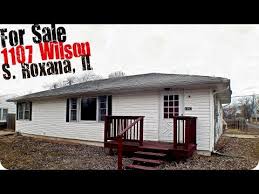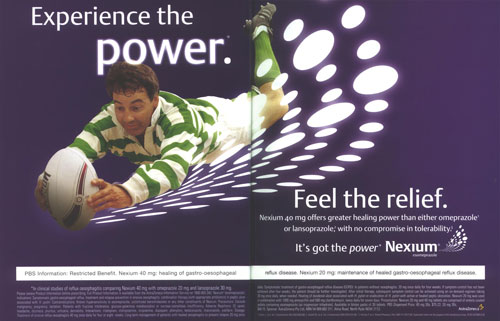Comcast Corp. v. Behrend’s Impact In Toxic Tort Litigation
By admin on March 26, 2014
I have written about how the U.S. Supreme Court’s decision in Comcast v. Behrend has had the practical result of raising the bar for class certification and leveling the playing field for corporate defendants. Until recently, however, it was unclear what impact this anti-trust decision would have on toxic tort litigation.
practical result of raising the bar for class certification and leveling the playing field for corporate defendants. Until recently, however, it was unclear what impact this anti-trust decision would have on toxic tort litigation.
On January 17, 2014, the Seventh Circuit issued a groundbreaking decision in Parko v. Shell Oil Company, which was an appeal from the Illinois district court’s certification of a class of property owners in Roxana, Illinois, who had filed suit against Shell Oil Company which (together with various subsidiaries) had owned and operated an oil refinery from 1918 to 2000 adjacent to the village where the 150 class members reside. Although multiple claims were alleged, Parko was largely a diminution of property value case.
In Parko, the class action plaintiffs were successful in obtaining class certification in the district court without having to provide evidence. Typically, plaintiffs seek to reserve any discussion of the merits of their claims until after class certification. Plaintiffs are well aware that the certification of a class creates enormous pressure on defendants to settle regardless of the merits of the case.
The plaintiffs alleged that the refinery had leaked benzene and other contaminants into the groundwater under the class members’ homes. The Seventh Circuit found it particularly significant that the groundwater was not being used as a drinking water supply. As such, it was unclear whether the contamination had caused any diminution of property value at all.
In addition, the Seventh Circuit noted defendants’ contention that the contamination alleged by plaintiffs occurred over a 90-year period and involved acts and omissions charged against the six defendants, and maybe other polluters as well. The defendants had identified sources of pollution in the area that were attributable to the operations of non-parties. As a consequence, class members could have experienced different levels of contamination from multiple sources over many years.
Relying on the language in Comcast Corp. v. Behrend, the Court reversed the district court, holding that a trial judge may not "refuse to entertain arguments against respondents’ damages model that bore on the propriety of class certification, simply because those arguments would also be pertinent to the merits determination."
 The Court held that "mere assertion by class counsel that common issues predominate is not enough. That would be too facile. Certification would be virtually automatic. And so Rule 23 does not set forth a mere pleading standard….Rather, when factual disputes bear on issues vital to certification (that is, to whether the suit should be allowed to be litigated as a class action), such as predominance, the court must receive evidence . . . and resolve the disputes before deciding whether to certify the case." (emphasis added) In reviewing the record below, the court stated that it was not even clear that plaintiffs "have identified a common issue."
The Court held that "mere assertion by class counsel that common issues predominate is not enough. That would be too facile. Certification would be virtually automatic. And so Rule 23 does not set forth a mere pleading standard….Rather, when factual disputes bear on issues vital to certification (that is, to whether the suit should be allowed to be litigated as a class action), such as predominance, the court must receive evidence . . . and resolve the disputes before deciding whether to certify the case." (emphasis added) In reviewing the record below, the court stated that it was not even clear that plaintiffs "have identified a common issue."
The Parko decision is short and pithy, and contains a trove of valuable nuggets of good language for the class action toxic tort defense practitioner.
On proof of diminution of property value:
Real estate values have taken a drubbing in recent years, with the collapse of the housing bubble and the ensuing financial crisis. It can’t be assumed that a decline in the value of residential property in Roxana (if in fact there’s been a decline) is the result of proximity to a refinery that for all one knows has been leaking contaminants for the last 95 years without causing detectable harm. There are many things commonly found in soil beneath rural or suburban houses that homeowners would very much like not to enter their home (such as earthworms, fungi, ants, beetles, slugs, radon, chemical residues, thousands of different types of microbe— and groundwater), but as long as there is no danger of such unwanted visitors their underground presence should not affect property values. Benzene in the water supply is one thing; benzene in groundwater that does not feed into the water supply is quite another. (emphasis added)
On Rule 23’s predominance requirement post-Comcast:
The district judge did not explore any of these issues. He treated predominance as a pleading requirement. He thought it enough at this stage that the plaintiffs intend to rely on common evidence and a single methodology to prove both injury and damages, and that whether the evidence and the methodology are sound and convincing is a question going to the strength of the plaintiffs’ case and should be postponed to summary judgment proceedings or trial. But if intentions (hopes, in other words) were enough, predominance, as a check on casting lawsuits in the class action mold, would be out the window. Nothing is simpler than to make an unsubstantiated allegation. A district judge may not "refus[e] to entertain arguments against respondents’ damages model that bore on the propriety of class certification, simply because those arguments would also be pertinent to the merits determination."
On the appropriate level of judicial inquiry pre-certification:
The judge should have investigated the realism of the plaintiffs’ injury and damage model in light of the defendants’ counterarguments, and to that end should have taken evidence. For if the defendants are right, there is no common issue, only individual issues that will vary from homeowner to homeowner: is there benzene in the groundwater beneath his home at a level of concentration that if the groundwater were drunk would endanger health (and is there any possibility it would enter the water supply); what is the source of the benzene in the groundwater beneath a given home (that is, who is the polluter who caused the groundwater to become polluted); could the presence of the benzene in that concentration cause any other form of harm; has the presence of the benzene reduced the value of his property; if so, how great has the reduction been. It is difficult to see how these issues can be managed in the class action format. But in any event they must be engaged by the district judge before he can make a responsible determination of whether to certify a class.
" Benzene in the water supply is one thing; benzene in groundwater that does not feed into the water supply is quite another." Amen!

 lower court erred in failing to consider flaws in plaintiffs’ damages model merely because the damages model would be pertinent on merits issues…..thus, "running afoul of our precedents requiring precisely that inquiry". It was up to the district court to determine whether the expert’s methodology was "just and reasonable inference or speculative."
lower court erred in failing to consider flaws in plaintiffs’ damages model merely because the damages model would be pertinent on merits issues…..thus, "running afoul of our precedents requiring precisely that inquiry". It was up to the district court to determine whether the expert’s methodology was "just and reasonable inference or speculative."  Plaintiffs alleged that they paid higher prices for Nexium because less expensive generic versions of Nexium were prevented from coming onto the market due to AstraZeneca’s settlement with three generic manufacturers. The end-payors (as the plaintiffs called themselves) sought to certify a sprawling Rule 26(b)(3) class consisting of virtually every consumer (insured and uninsured), commercial insurer, health plan and pharmacy benefit manager who had paid any portion of the purchase price for Nexium for a six year period in twenty-six states.
Plaintiffs alleged that they paid higher prices for Nexium because less expensive generic versions of Nexium were prevented from coming onto the market due to AstraZeneca’s settlement with three generic manufacturers. The end-payors (as the plaintiffs called themselves) sought to certify a sprawling Rule 26(b)(3) class consisting of virtually every consumer (insured and uninsured), commercial insurer, health plan and pharmacy benefit manager who had paid any portion of the purchase price for Nexium for a six year period in twenty-six states. would continue to purchase branded Nexium after generic entry due to preference or their physician’s recommendation. Such brand loyalists would potentially have faced higher Nexium prices had generic Nexium been available.
would continue to purchase branded Nexium after generic entry due to preference or their physician’s recommendation. Such brand loyalists would potentially have faced higher Nexium prices had generic Nexium been available. meet their burden of Rule 26(b)(3) that questions of law or fact common to class members predominated over any questions affecting only individual members, the district court denied class certification.
meet their burden of Rule 26(b)(3) that questions of law or fact common to class members predominated over any questions affecting only individual members, the district court denied class certification. On May 1, 2013, the Second Circuit issued an important decision in
On May 1, 2013, the Second Circuit issued an important decision in 
 In Donovan, the court held that plaintiffs who sued for medical monitoring, based on sub-clinical effects of exposure to cigarette smoke and increased risk of lung cancer, stated a cognizable claim under Massachusetts state law.
In Donovan, the court held that plaintiffs who sued for medical monitoring, based on sub-clinical effects of exposure to cigarette smoke and increased risk of lung cancer, stated a cognizable claim under Massachusetts state law. damages, if certain requisites are met, Donovan can be distinguished from several Appellate Division medical monitoring cases in New York. For example, in
damages, if certain requisites are met, Donovan can be distinguished from several Appellate Division medical monitoring cases in New York. For example, in  The
The  The Third Circuit affirmed class certification on the ground that defendant’s objections to the scope of the expert’s damages model were not appropriate at the class certification stage; such an inquiry would improperly require the trial court to reach the merits of plaintiffs’ claims. Any consideration of the objections to the scope of the expert’s damages assessment should await the merits phase of the case, according to the court.
The Third Circuit affirmed class certification on the ground that defendant’s objections to the scope of the expert’s damages model were not appropriate at the class certification stage; such an inquiry would improperly require the trial court to reach the merits of plaintiffs’ claims. Any consideration of the objections to the scope of the expert’s damages assessment should await the merits phase of the case, according to the court. Rule 23 prerequisites have been satisfied.
Rule 23 prerequisites have been satisfied. The
The